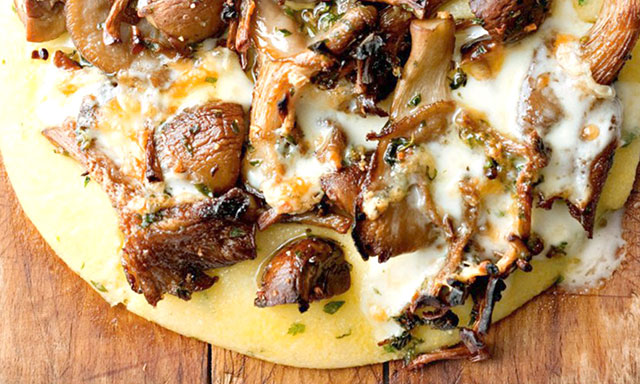Maize, together with rice and wheat, is one of the world’s most important crops. It is a crucial source of food, fuel and fibre.
It is also the world’s most geographically ubiquitous grain. Although maize was domesticated more than 9 000 years ago in the Americas, its global success only occurred in the past 500 years. The story of how maize became a global crop is intertwined with the story of global trade and exploration. It tells of how trade routes were developed to connect the Old and the New World, and of how empires were built and how they collapsed. In many instances, the story of maize is the story of colonialism.
When the Mongol empire collapsed and the trade routes connecting Europe to Asia became dangerous and pricey, European merchants and explorers set out to find alternative routes to maintain the trade in exotic spices.
In 1488, the Portuguese explorer Bartolomeu Diaz crossed the southernmost point of Africa. This proved, to some extent, that the south-east sea route may be viable after all. Italian explorer Christopher Columbus, sailing under protection of the Spanish king, followed the advice of Italian astronomer Paolo Toscanelli and, in 1492, left from the Canary Islands, heading straight west, looking for an alternative, shorter route.
Columbus ended up discovering the island of San Salvador in the Bahamas, which he thought was the Indies, an island off the east coast of Asia. And so the Caribbean islands became known as the West Indies.
Columbus must have been disappointed that he did not find Asia and its riches. The island he discovered instead was fertile but poor. It had no spices. But he did find that the islanders planted and ate a cereal they called mahiz, and thus begun the story of maize, the global crop.
He returned to Europe with his loot: Gold, chillies, tobacco, pineapples and maize. What followed was the rise of European nations to global superpowers and colonial empires, built through the brutal plundering of the Americas and the destruction of their ancient civilisations.
The Old World sent cattle, coffee, sheep, sugar, wheat and chickens, and the New World provided turkeys, tomatoes, pumpkins, potatoes and maize, amongst other commodities, in what would be known as the Columbian Exchange. This was the beginning of globalisation, and for those newly discovered territories, the process was wretched, bloody and nothing short of brutal decimation.
By the middle of the 17th century, 90% of the indigenous population of the Americas was wiped out.
Modern-day DNA analyses link some of the Spanish varieties of maize to varieties found in the Caribbean where Columbus collected his first samples. Italian maize was matched with maize from South America, and northern European varieties were the same as those in North America.
These results proved two important things: That maize was entirely an American thing (Asia had nothing to do with it as it was first thought), and that maize was very diverse, something which contributed to its suitability as a global crop. It could grow almost anywhere.
The Portuguese introduced maize to eastern Asia as far back as 1496. Genetically, the maize from China down to Indonesia is related to Mexican maize.
The precise point of introduction of maize to Africa is not known. One school of thought holds that maize was introduced from the north, across the Sahara, by Arab traders, and another that it was introduced along the western coast of Africa by the Portuguese. There is no clear evidence as to which is the most accurate account.
One reason for believing that the Portuguese tried to introduce maize to Africa was to grow a cheap staple food for the slave trade. Such food had to be storable and cheaply transportable and had to be grown near the location of the trade. Linguistic evidence suggests that maize was present in northern Angola by 1600 and known as masimporto, which mean that it was introduced by the Portuguese.
By 1591, in the Congo, maize was known as massa manputo or ‘grain of the Portuguese’. A few years down the line and maize was a staple deep in the African interior and the principal food crop in the Congo and ‘Loanda’.
In East Africa, maize became known as pemba, suggesting perhaps that maize was introduced by the Portuguese from that island. It is also proposed that the Portuguese introduced maize in Mozambique around 1570. By the end of the next century, maize was found pretty much throughout all of East Africa and its interior, except for Uganda, where it was introduced only much later – between 1863 and 1900, possibly by Arab caravans trading along the east coast of Africa.
Today, maize is a staple food in many parts of the world. More maize is produced than wheat or rice, but only a relatively small fraction thereof is for direct consumption by humans. It is only the sugar-rich varieties (known as sweet corn) that are grown for human consumption as kernels. Most maize is used for producing maize meal, ethanol and biofuels, animal feed and human foodstuffs such as corn oil, alcoholic beverages such as bourbon, corn starch (maizena) and corn syrup.
• 4 tablespoons olive oil
• 350 grams mixed mushrooms, very large ones halved
• 2 garlic cloves, crushed
• 1 tablespoon chopped tarragon
• 1 tablespoon chopped thyme
• 1 tablespoon truffle oil
• 500 millilitres vegetable stock
• 80 grams Parmesan, grated
• 30 grams butter
• 1 teaspoon finely chopped rosemary
Stay informed with The Namibian – your source for credible journalism. Get in-depth reporting and opinions for
only N$85 a month. Invest in journalism, invest in democracy –
Subscribe Now!










